
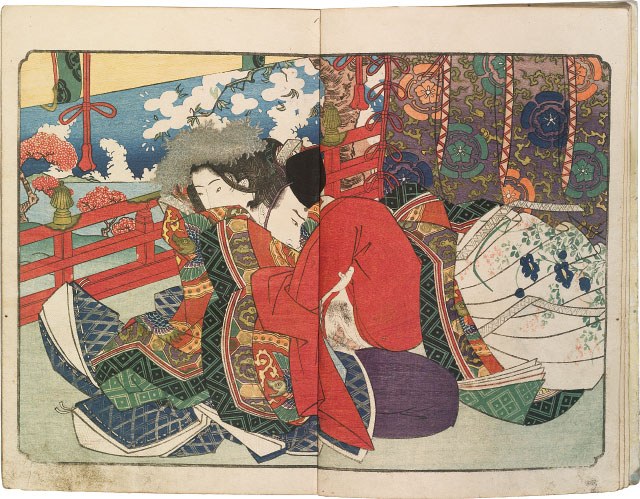
A: Cherry Blossom Festival
The first double-page illustration from volume I. A lavish composition of a courtier making love with a beauty decorated with silver flowers in her hair. Their bodies are nearly completely enveloped by their brocade clothing and curtains.
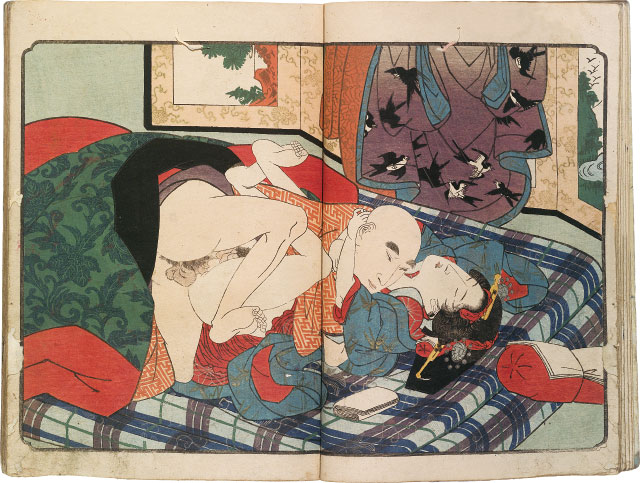
B: Nanshoku (Homosexual Love)
The sixth double-page illustration from volume I. The head priest of a temple makes love to a kagema (male prostitute) dressed in feminine attire in a private room at a kagema teahouse.
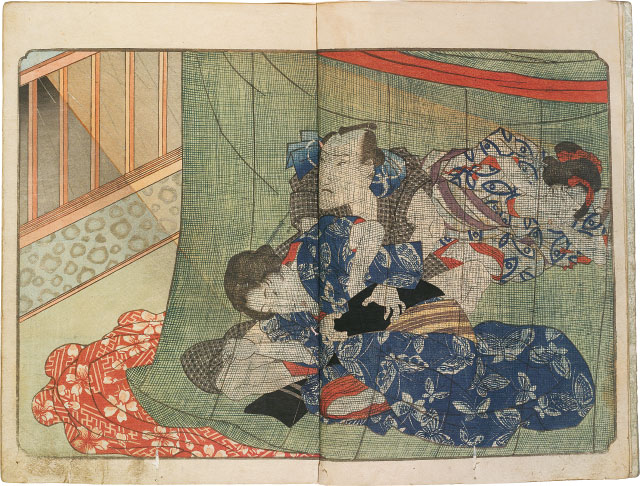
C: During a Storm
The third double-page illustration from volume II. A man comforts two women under a mosquito net who are frightened by a storm.
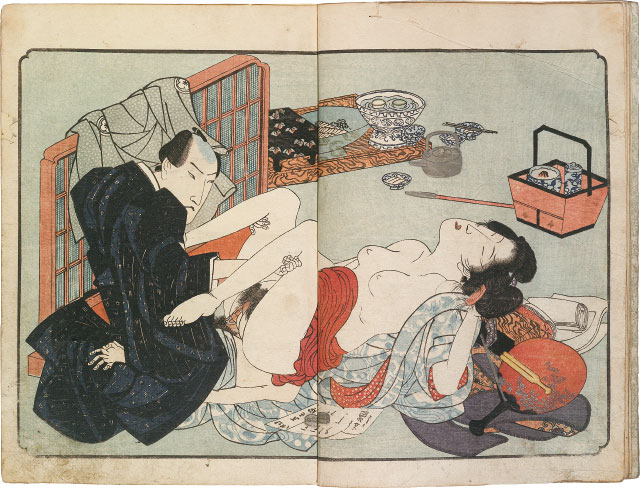
D: Aphrodisiac
The fourth double-page illustration from volume II. A kneeling man enters a women who throws her head back in apparent ecstasy. They are surrounded
by the remnants of entertainment, a tray with snacks, sake kettle and cups, and
a tobacco set. In the foreground is a
small container of an aphrodisiac they
are sampling.
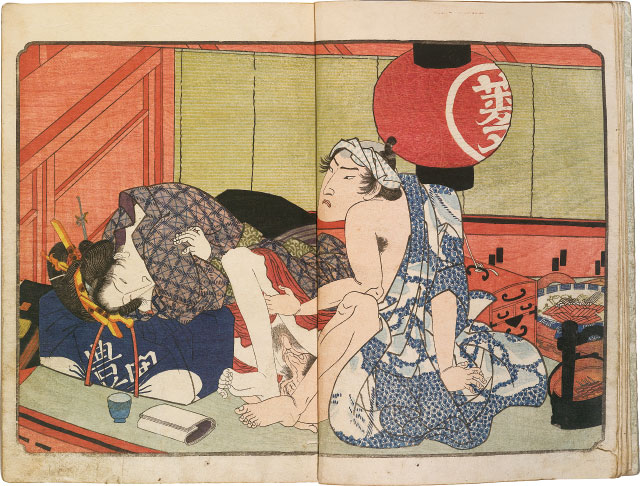
E: Delivery man
The fifth double-page illustration from volume II. A waitress at a teahouse bends over a wrapped bundle as a delivery man, likely her boyfriend, enters her from behind.
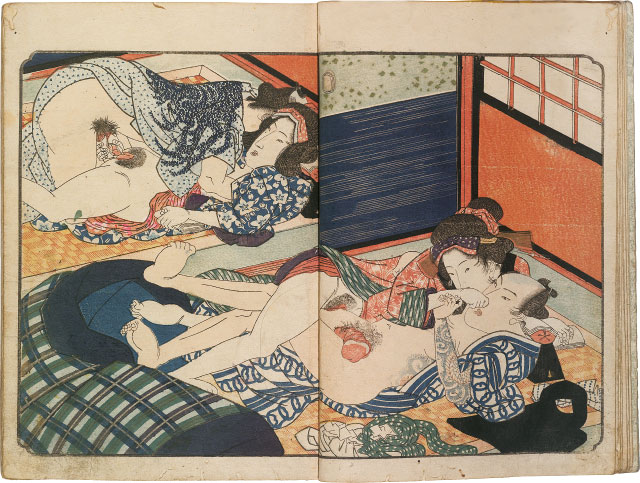
F: Crowded Brothel
The sixth double-page illustration from volume II. A view of two prostitutes literally working side by side in a busy brothel.
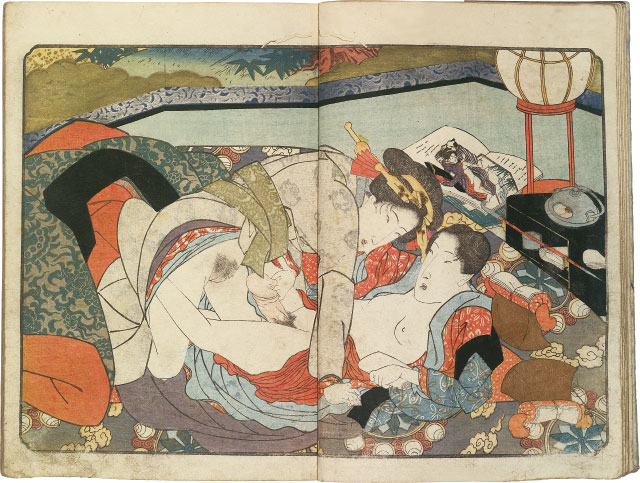
G: Illustrated Erotic Book
The fifth illustration from volume III. A couple uses a shunga ehon for inspiration
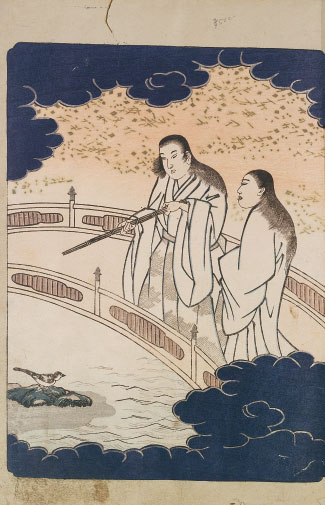
Yanagawa Shigenobu, 1787-1832
The Floating Bridge of Heaven
(Ama no Ukibashi)
complete set of three fukuro-toji ehon (string-bound illustrated books), blue covers with paper title slips (partially missing), originally numbered ten, chi, hito (heaven, earth, mankind) with corresponding frontispieces illustrations: the first with depicting Izanagi and Izamami on a bridge; the second mandarin ducks swimming among reeds, and the third depicting Jo and Uba, each volume with six double-page erotic images, with extensive embellishments such as karazuri ('blind printing'), burnishing and metallic printing, signed on one of the illustrations, Ikkasai Sukinobu (believed to be Shigenobu's 'hidden' name), dated 1830
ohon 9 7/8 by 7 1/8 in., 25.2 by 18.1 cm
Yanagawa Shigenobu I was a pupil of Katsushika Hokusai (1760-1849) and later became his son-in-law and then his adoptive son. Shigenobu worked primarily in Edo but also in Osaka for a brief period from 1822-1825.
The ohon size format was largely reserved for deluxe publications such as this set. The title, Ama no Ukibashi, refers to a bridge in Shinto mythology which connects heaven and earth and was the location of the origins of the temporal world. The ancient male deity Izanagi stood on the bridge with the female deity Izamami and dipped his 'spear' into the primordial waters below, as he pulled it out he shook off droplets which formed the island of Ono-goro-jima, the first island of the Japanese archipelago. The two gods descended to the island and learned how to copulate by watching the suggestive movements of a wagtail bird. The procreation of these two deities begat all other major gods and the imperial line of Japan. A chaste image of the deities on the bridge is depicted in the frontispiece for the first volume (illustrated p. 90).
References:
Hillier, The Art of the Japanese Book, 1987, Vol II, p. 907, pl. 176
Timon Screech, Sex and the Floating World, pp. 263-266, pl.133
Uhlenbeck and Winkel, Japanese Erotic Fantasies, 2005, pp. 178-179
Clark et al., Shunga: Sex and Pleasure in Japanese Art, 2013, p. 48, cat. p. 101
$8,500













